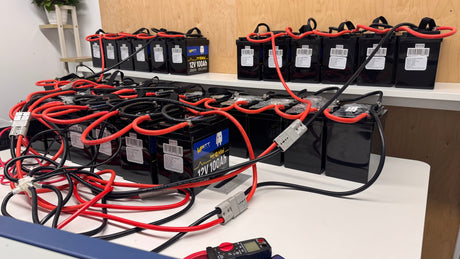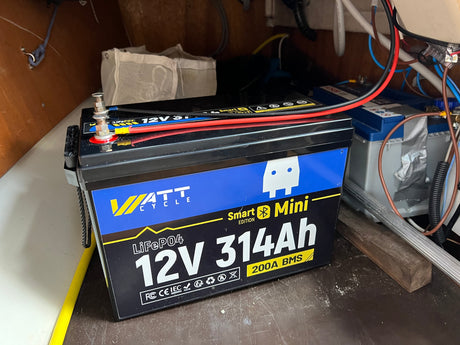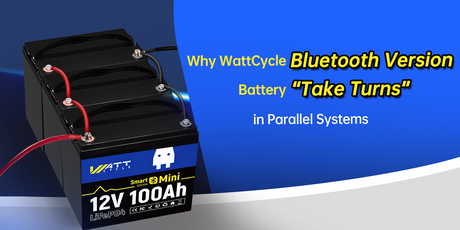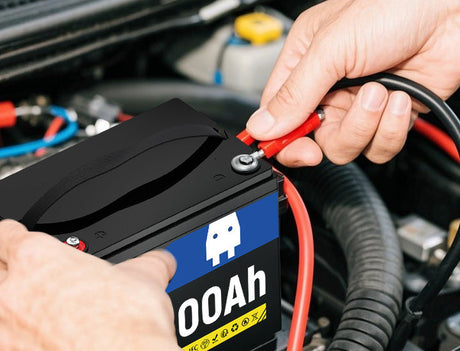Posted by Matt Pierce on
Powering Confidence on Every Kokanee Trip
Fishing boats have come a long way—and so has the power demand that comes with them. On my boat, I run a full suite of electronics and gear: four electric Cannon downriggers, two Garmin fish finders, a Humminbird unit, Garmin Livescope, livewell, bilge pumps, stereo, navigation lights, and more. Add in my electric trolling motor—which I love for being quiet, clean, and low-maintenance—and it's clear: everything depends on reliable battery power.
When my system runs smoothly, it’s a dream. But when the batteries fall short, the entire day on the water suffers. That’s why, a few seasons ago, I began transitioning to lithium power.
Lithium Proven: My First Switch
In 2022, I replaced the AGM batteries on my trolling motor with lithium. Historically, I’d only get about three seasons of use out of my AGM batteries before their runtime would start to degrade significantly—and it would be time to start shopping for replacements. Now, in my fourth season with lithium, I’m still getting twice the runtime compared to when the AGMs were new, and there's been no noticeable drop in performance. That change alone made me a believer.
But I knew I’d eventually have to upgrade my starting batteries too—the same ones that also power all my electronics. At the time, there weren’t many lithium options that could serve both purposes: cranking a large outboard and supporting deep-cycle electronics throughout a full day.
The Breaking Point: More Electronics, More Draw
This past season, I added Garmin Livescope and another fishfinder to the boat. That pushed my system over the edge. I started noticing issues with image quality, and after some testing, I traced the problem to voltage dips—dropping below 12V and causing unstable performance.
Even with two Group 31 AGM batteries, split between devices, my electronics couldn’t keep up on long fishing days. I'd find myself starting the motor just to get a recharge mid-trip. That’s when I decided: no more power issues.
Enter Wattcycle
After researching several marine lithium options, I decided on the Wattcycle 12 V, 100 Ah, 1200 CCA marine cranking battery for my new setup. Wattcycle stood out to me because it checked every box on my list—enough cranking power for my Verado 350, the deep-cycle capacity I needed, Bluetooth monitoring, and being able to be recharged on the water by my main motor alternator. It also meets Mercury’s published requirements for lithium compatibility.
At the time of writing, I’ve just installed the Wattcycle battery and am preparing for full testing during my upcoming fishing trips. I’ll be tracking performance, voltage stability, and on water charging, and I’ll be posting updates here on the blog and over on my YouTube channel. If you’re considering a lithium upgrade, follow along to see how it performs in real-world conditions.
Why I Made the Switch
- Reliable deep-cycle performance for all-day electronics use
- Powerful 1200 CCA start for my Verado 350
- Lightweight & compact for better boat handling
- Supports on water charging with my Verado 350
- Rapid charging between outings
- Real-time monitoring via Bluetooth app
- Steady voltage above 12 V for sonar clarity
- Self-heating for safe cold-weather charging
Mercury Verado 350 Compatibility: Meets OEM Lithium Requirements
Before installing any lithium battery on a high-output outboard like the Mercury Verado 350, it’s important to ensure the battery meets the manufacturer’s starting and charging specifications. Mercury issued a service bulletin with the minimum lithium battery requirements for safe and reliable use with their engines.
Here’s how the Wattcycle 12V 100Ah 1200CCA Lithium Battery stacks up:
| Mercury Minimum Requirement | Wattcycle Battery Spec |
|---|---|
| Chemistry: LiFePO₄, Marine Cranking Use | ✅ Lithium Iron Phosphate, Marine Starting Rated |
| Min Cranking Amps: 800A for 8 sec @ 20°F | ✅ 1200 CCA (Cold Cranking Amps) |
| Peak Charge Acceptance: 165A (20–130°F) | ✅ Supports 200A continuous, 250A peak charging |
| Max Alternator Output: 150A (20–130°F) | ✅ Rated for 150A alternator charging |
| Max Charge Voltage: 14.8V | ✅ Compatible (Max charge voltage up to 14.8V) |
| Reserve Capacity (RC25 @ 80°F): 135 min | ✅ Equivalent performance from 100Ah deep-cycle |
| Ingress Protection: IP67 minimum | ✅ IP67 certified waterproof enclosure |
Disclaimer: Always verify your outboard manufacturer's starting and charging specifications before switching to a lithium battery. Although the Wattcycle 1200CCA battery meets Mercury’s documented requirements, other brands or engine models may vary in compatibility. When in doubt, consult with your dealer or engine technician prior to installation.
Key Advantages on the Water
- Dual-Purpose Power: 1200 CCA for startups and 100 Ah deep-cycle capacity in one unit.
- Lightweight & Compact: 24 lb and a small footprint to enhance boat balance and efficiency.
- Bluetooth Monitoring: Real-time voltage, temperature, charge status, and battery health.
- Faster Charging: Recharge fully in 1–3 hours with a lithium-compatible charger.
- Smart Battery Management: 200 A BMS provides safety for voltage, current, and temperature.
- Marine-Ready Durability: Waterproof to IP‑67 and built for vibration resistance.
- Cold-Weather Ready: Self-heats to safely charge in freezing conditions.
- Forced Start Button: Provides an emergency manual override to start your motor even if the battery protection system prevents normal startup.
Frequently Asked Questions
Is it worth upgrading to lithium?
Absolutely. You get reliable startups, cleaner power for electronics, Bluetooth monitoring, and 6,000+ charge cycles—perfect for serious anglers.
Will Bluetooth drain the battery?
No. The Bluetooth module uses minimal power and only activates when you connect to the app.
Can I charge it below freezing?
Yes. The built-in heater automatically warms the battery above 32°F before charging begins.
What charger should I use?
Use a lithium-compatible smart charger—NOCO’s GENPRO series is a solid choice.
Video Review
Watch for my full install video where I’ll show how I mounted it, connected electronics, and tested everything on the water.









